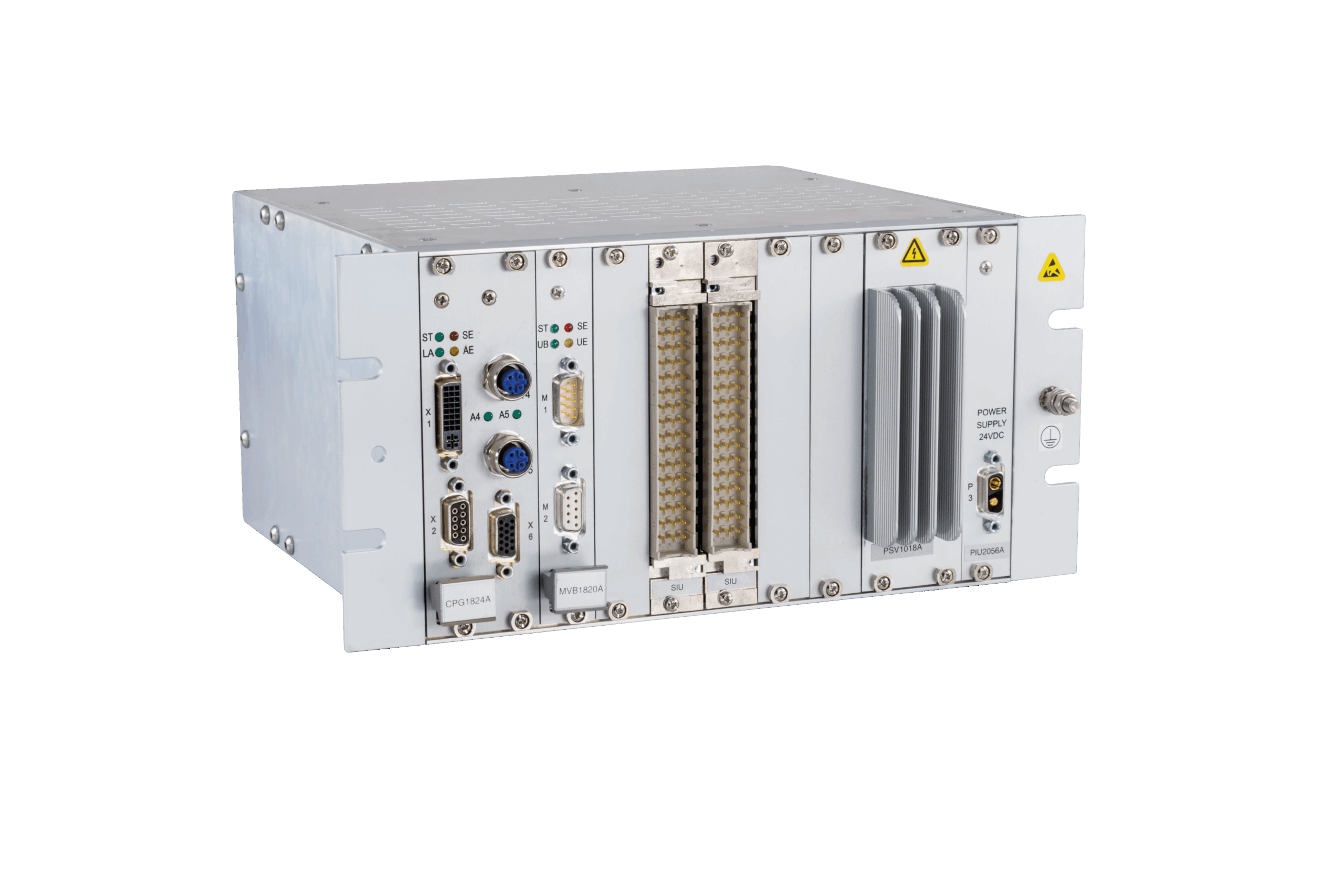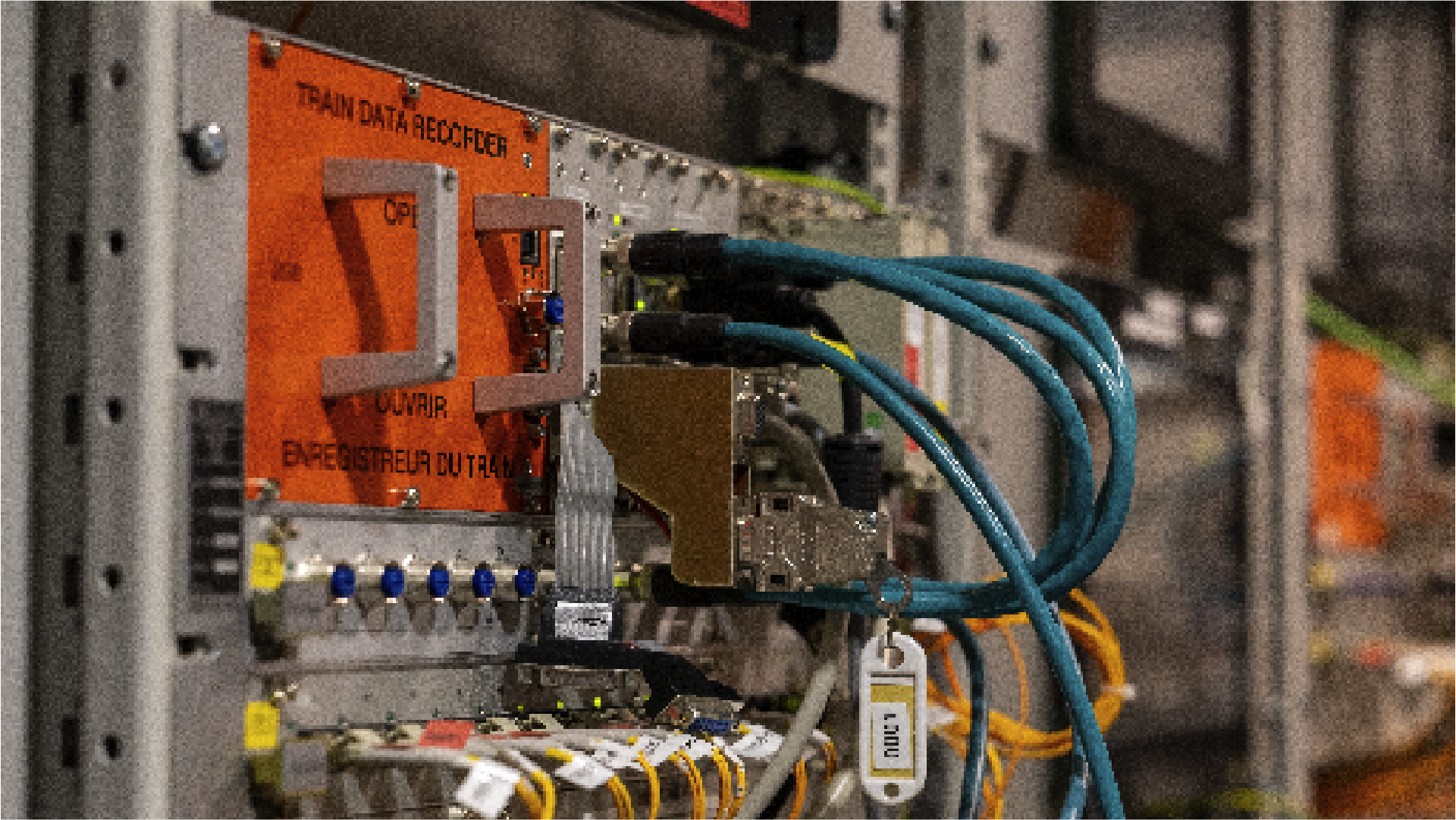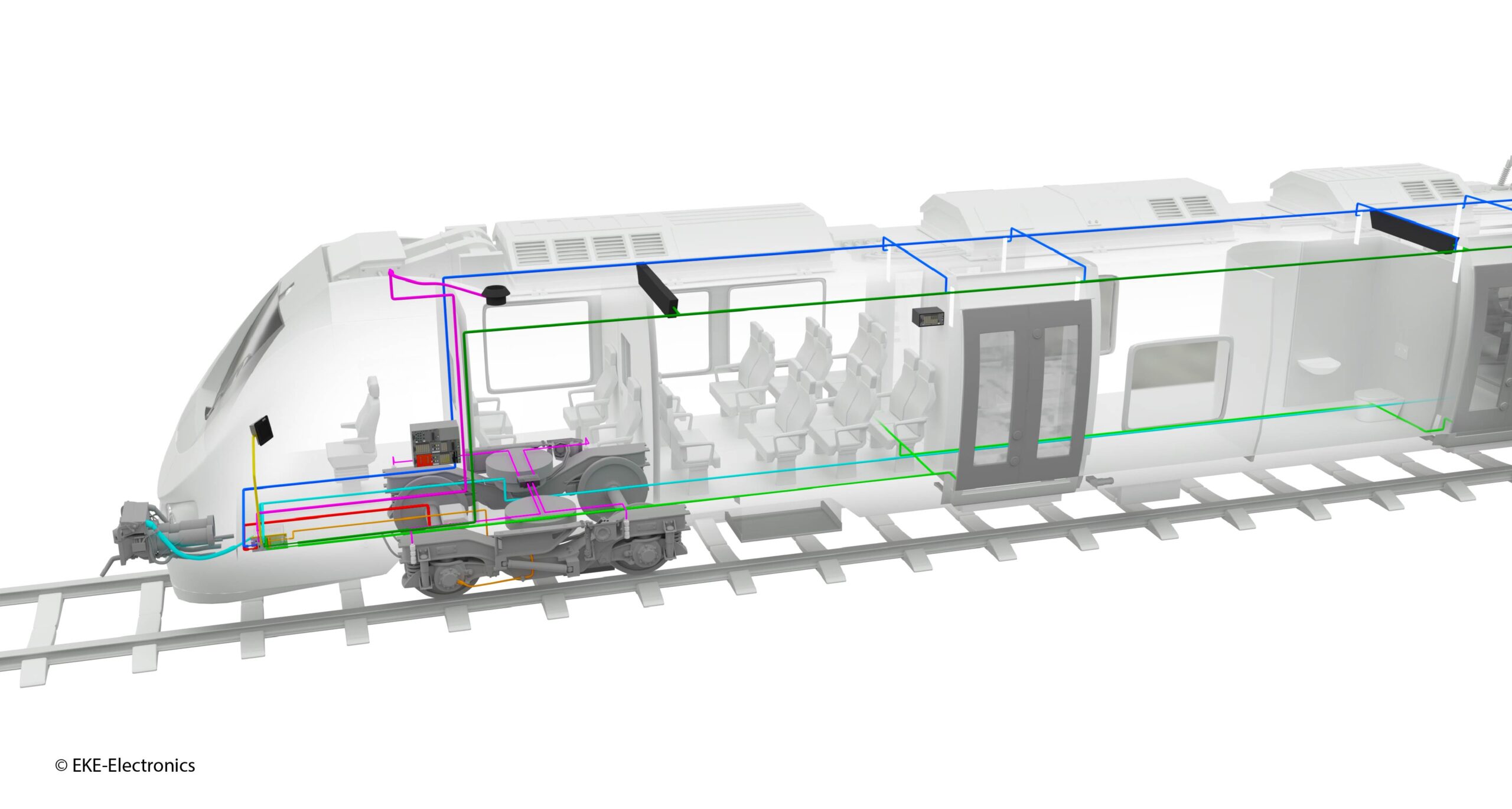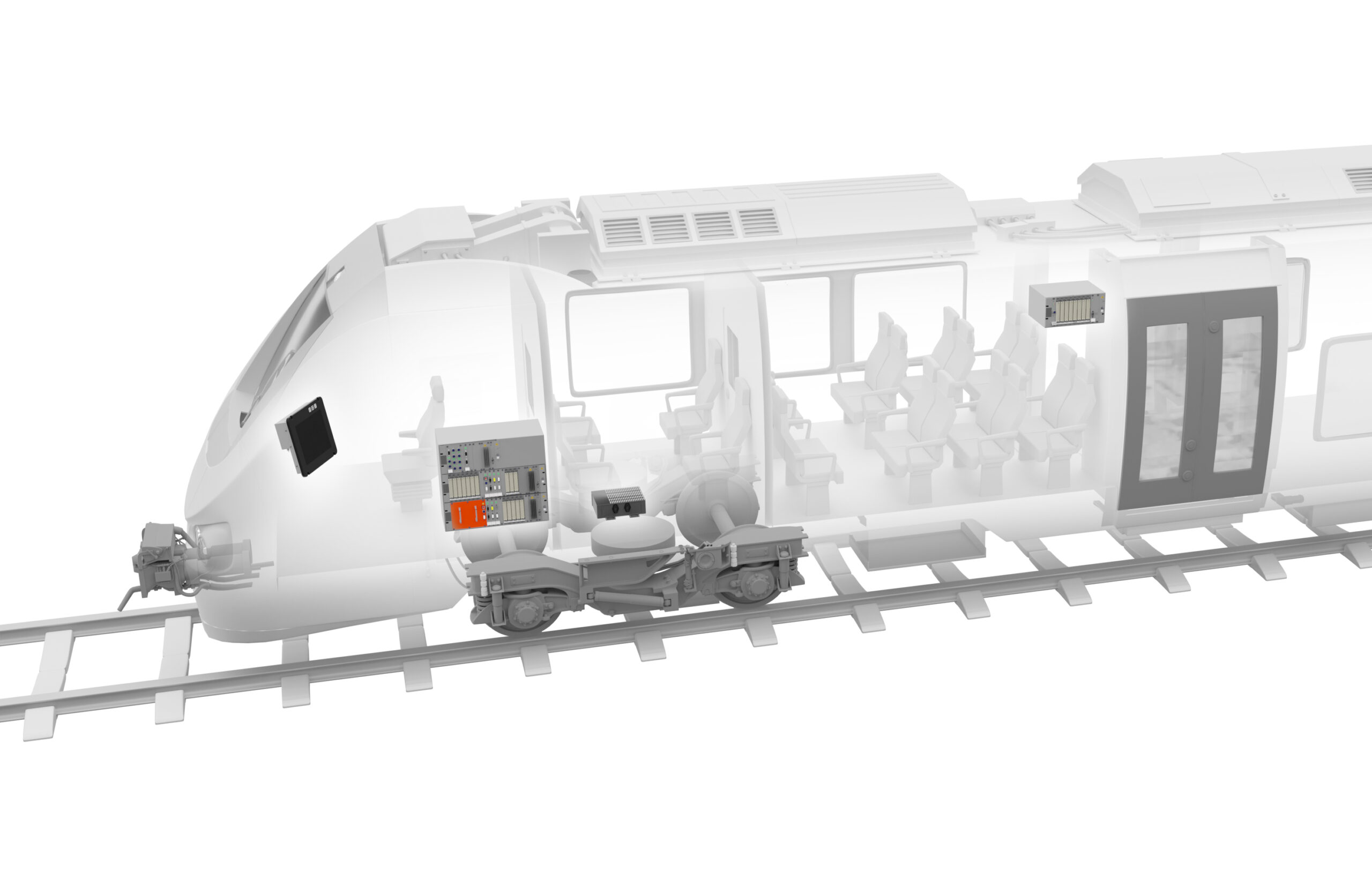Trains rely on multiple networks to control various onboard systems. Gateways play a critical role in bridging these networks, allowing the train’s subsystems to communicate seamlessly. This blog gives an explanation of Gateways and their functions, the different types that exist and their role in Train Control and Management Systems.
What Is a Gateway?
A Gateway is a device that acts as a translator between different communication protocols used in trains so that data can flow from one network to another. Essentially, it acts as an adapter or bridge between otherwise incompatible bus systems. It enables interoperability between various subsystems by bridging networks such as Wire Train Bus (WTB), Multifunction Vehicle Bus (MVB), Ethernet Consist Network (ECN), Controller Area Network (CAN), and proprietary serial links. In short, a gateway enables different parts of the train to “talk” to each other as one cohesive system, ensuring that data can flow smoothly between different parts of the train, whether between vehicles or within a single car, regardless of the underlying communication technology.
Within a train, gateways are often embedded in the Train Communication Network (TCN) as nodes that route data between various subsystems and higher-level networks. This allows the gateways to provide unified control and monitoring for the whole train, even though the onboard networks are different from each other.
At EKE-Electronics, we refer to gateways as TCN Gateways.
What Does a Gateway Do?
The primary function of a Gateway is to facilitate real-time, deterministic communication across the train. A gateway can be a dedicated stand-alone device or part of a larger train control unit. In many modern trains, the coach computer or vehicle control unit doubles as a gateway, linking the vehicle’s local bus to the train’s main bus.
The main functions of a Gateway are as follows:
Inter-vehicle communication
This links the control networks of different train cars together. Trains are made up of multiple vehicles (cars or coaches), and each vehicle might have its own local network. A Gateway enables these separate cars to communicate over a train-wide network.
Intra-vehicle communication
This is the network within a single train, car or locomotive. Inside one vehicle, there are many subsystems (doors, air conditioning, brakes, etc.) that need to communicate. A Gateway facilitates this by acting as the central node for the car’s internal network (often called a consist network or vehicle bus).
Protocol translation
Gateways convert data and commands from one network protocol to another, ensuring that subsystems on different buses (e.g., a CAN-based door controller and an Ethernet-based backbone) can exchange information.
Integration of safety-critical applications: Safety-critical systems, like Automatic Selective Door Operation (ASDO), are isolated by design for reliability and safety. A Gateway helps integrate these systems with the train’s main network while preserving the strict safety requirements. In essence, the gateway acts as a secure conduit for vital information.
Network segmentation
They connect discrete networks (e.g., linking a consist-level bus to the train-level bus) while keeping them logically separated. This maintains modularity so each vehicle can have its own network, with the gateway linking it to the train-wide system.
Data routing
A gateway forwards messages to the appropriate network. For example, it might route a door-close command from the train’s central controller on an Ethernet backbone to the door subsystem on a CAN bus.
By fulfilling these functions, gateways form the backbone of a train’s communication infrastructure.
Key Components of a Gateway
A typical EKE-Trainnet® TCN Gateway consists of:
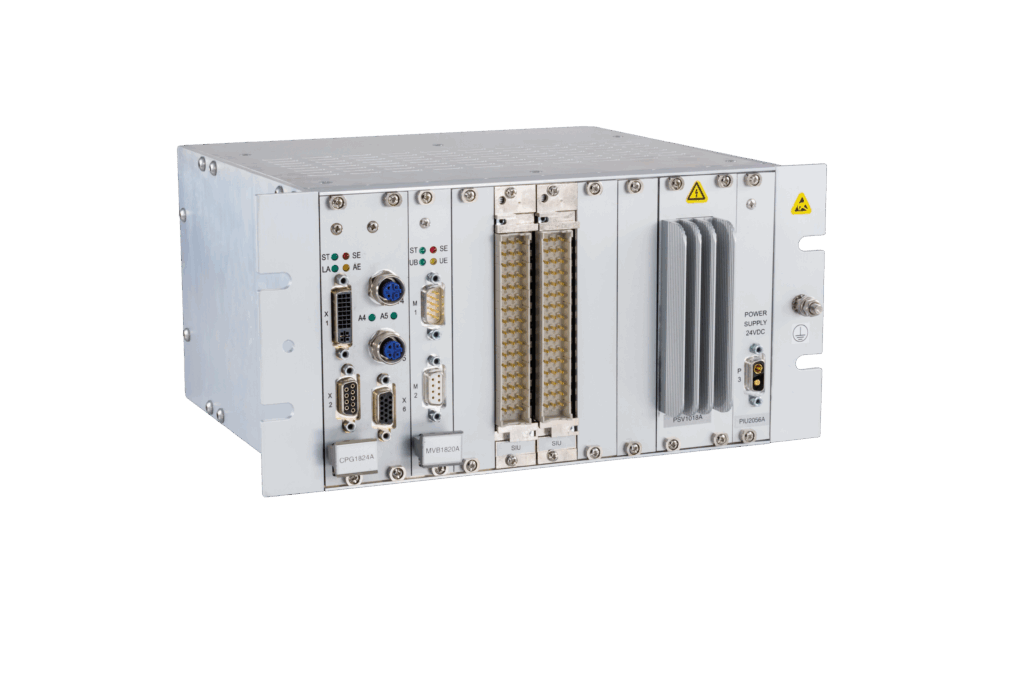
- Central Processing Unit (CPU) – The brain of the gateway. Application software runs on the CPU.
- Bus Interface Modules – For WTB, MVB, CAN, Ethernet, and serial links.
- Power Supply Unit – Converts train battery voltage to usable power.
- Racks – Modular enclosures (20TE, 44TE, 84TE) that house the modules.
- Optional Redundancy – Dual CPU or dual rack configurations for high availability.
Common Types of Train Gateways and Their Functionality
Train communication networks typically include several bus technologies, and gateways are often categorised by the networks they connect. The most common types of gateways in trains involve combinations of the following networks: WTB, MVB, CAN and Ethernet. Each type of gateway has a specific purpose and functionality:
WTB Gateway
- Typical Role: Connects multiple vehicles in a train via the Wire Train Bus. Acts as the backbone for train-wide communication in fixed or semi-permanent formations.
- Data Rate: Moderate (1 Mbit/s). Sufficient for control and monitoring data across vehicles.
- Communication: Deterministic, cyclic communication with a fixed schedule. Based on IEC 61375-2-1.
- Integration Level: Train-level backbone. Interfaces with MVB or Ethernet gateways to reach vehicle subsystems.
- Pros:
- Proven interoperability standard for train-wide control
- Reliable and deterministic
- Designed for harsh rail environments
- Cons:
- Limited bandwidth for modern data needs
- Less flexible for dynamic train formations
- Being gradually replaced by Ethernet in new designs
MVB Gateway
- Typical Role: Connects MVB vehicle bus to train backbone or other networks. Used for control networks like traction and brakes.
- Data Rate: Moderate (~1 Mbit/s). Good for control and sensor data, not for large data.
- Communication: Deterministic Master-slave with fixed schedule (IEC 61375-3-1).
- Integration Level: Vehicle-level network. Needs WTB or Ethernet gateway to connect beyond the vehicle.
- Pros:
- Reliable timing for control
- Mature and proven in rail
- Integrates well with WTB
- Cons:
- Limited bandwidth
- Labor-intensive cabling
- Aging technology
CAN Gateway
- Typical Role: Connects CAN-based subsystems to higher-level buses. Used for integrating HVAC, engine controllers, etc.
- Data Rate: Low (typically 125 kbps). Suitable for simple sensor/actuator data.
- Communication: Event-driven with priority arbitration. Good for short messages, but can be overloaded.
- Integration Level: Subsystem-level. Requires a gateway to connect to MVB, WTB, or Ethernet.
- Pros:
- Simple and flexible
- Good for modular subsystems
- Lightweight protocol
- Cons:
- Very limited speed
- Range and node count constraints
- Not originally designed for safety-critical use
Ethernet Gateway (ECN/ETB)
- Typical Role: Connects IP/Ethernet networks to other train buses. Used for train-wide backbone or integrating IP-based subsystems.
- Data Rate: High bandwidth (e.g., 100 Mbps). Supports rich data like video, audio, and diagnostics.
- Communication: Packet-switched, non-deterministic by default. Can be enhanced with real-time protocols (e.g., TRDP, TSN).
- Integration Level: Can serve as both train backbone and vehicle network. Common in modern TCMS architectures.
- Pros:
- High throughput
- Uses standard IP networking
- Supports mixed traffic types
- Cons:
- Complex setup and configuration
- Higher cost and hardware requirements
- Not inherently real-time without enhancements
Integration into Train Communication Networks (TCN)
Each of the gateway types above is essentially performing a similar role (protocol conversion and networking), but on different layers of the train’s architecture:
- WTB gateways link entire vehicles together at the train backbone level.
- MVB and CAN gateways deal with vehicle-level control networks (with lower data rates and often more stringent real-time requirements).
- Ethernet gateways handle high-level data and often connect modern, high-bandwidth networks.
Collectively, they enable a Train Communication Network that might include all these bus technologies working as one system.
EKE-Electronics enables customers to build one physical gateway device that can have multiple interfaces. For example, a single gateway unit might combine an Ethernet port, an MVB port, and a WTB port in one, effectively serving as an Ethernet–MVB–WTB gateway node. Indeed, our modular gateway products allow combining various interface modules (WTB, MVB, CAN, etc.) in one rack to get exactly the required network connections.
Standards Governing Gateways
Gateways are governed by a suite of international standards, ensuring interoperability and safety:
- IEC 61375-1 – General architecture
- IEC 61375-2-1 – Wire Train Bus (WTB)
- IEC 61375-3-1 – Multifunction Vehicle Bus (MVB)
- IEC 61375-3-3 – CANopen Consist Network (CCN)
- IEC 61375-3-4 – Ethernet Consist Network (ECN)
- IEC 61375-2-5 – Ethernet Train Backbone (ETB)
- UIC Code 556 – Functional addressing and train composition
Gateways in ETCS Applications
In the context of the European Train Control System (ETCS), Gateways play a pivotal role as Train Interface Units (TIUs). They connect the ETCS On-Board Unit (OBU) to the existing Train Control and Management System (TCMS), enabling legacy fleets to integrate with modern signalling systems.
You can read more about Gateways in ETCS application in our blog “What is an ETCS-TIU?
Cybersecurity Considerations
Because gateways serve as critical nodes within the train’s network architecture, often handling safety-critical data such as brake commands or emergency signals, they must meet stringent cybersecurity requirements. Any compromise in their integrity could have serious consequences.
As trains become increasingly connected, the risk of cyber threats rises. Gateways, which interface with multiple internal and sometimes external networks, can become potential entry points for attacks if not properly secured. Robust protection of both the gateway and the connected systems is therefore essential.
Protection can include hardening the gateway’s software (using secure protocols, encryption, and authentication), as well as network-level security measures (firewalls, intrusion detection) built into the gateway or surrounding devices.
The industry has recognised this and with the introduction of the EU Cyber Resilience Act (CRA), it is now expected that cybersecurity is an integral part of the TCMS platform and operations design.
How EKE-Electronics Supports You
EKE-Electronics offers one of the most versatile TCN Gateway solutions on the market backed by nearly 40 years of experience in both new build and refurbishment projects. Our solutions are designed with durability, maintainability, and long-term support in mind.
With our modular EKE-Trainnet® platform, you can:
- Customise your gateway with the interfaces and functions you need
- Leverage CODESYS for application development
- Integrate with legacy and modern systems using our wide range of interface modules
- Ensure long-term support with our modular design
- Rely on proven safety with SIL 2 certified configurations
Our headquarters in Espoo, Finland, is home to a team of approximately 100 professionals, many of whom have over a decade of experience. This continuity and depth of knowledge allow us to understand and meet the specific demands of modern and legacy rolling stock alike.
Using our modular EKE-Trainnet® system, we work closely with customers to build Gateways that align with their technical requirements. Whether you’re building a new fleet or upgrading existing rolling stock, EKE-Trainnet® TCN Gateways provide the flexibility, reliability, and compliance you need.

